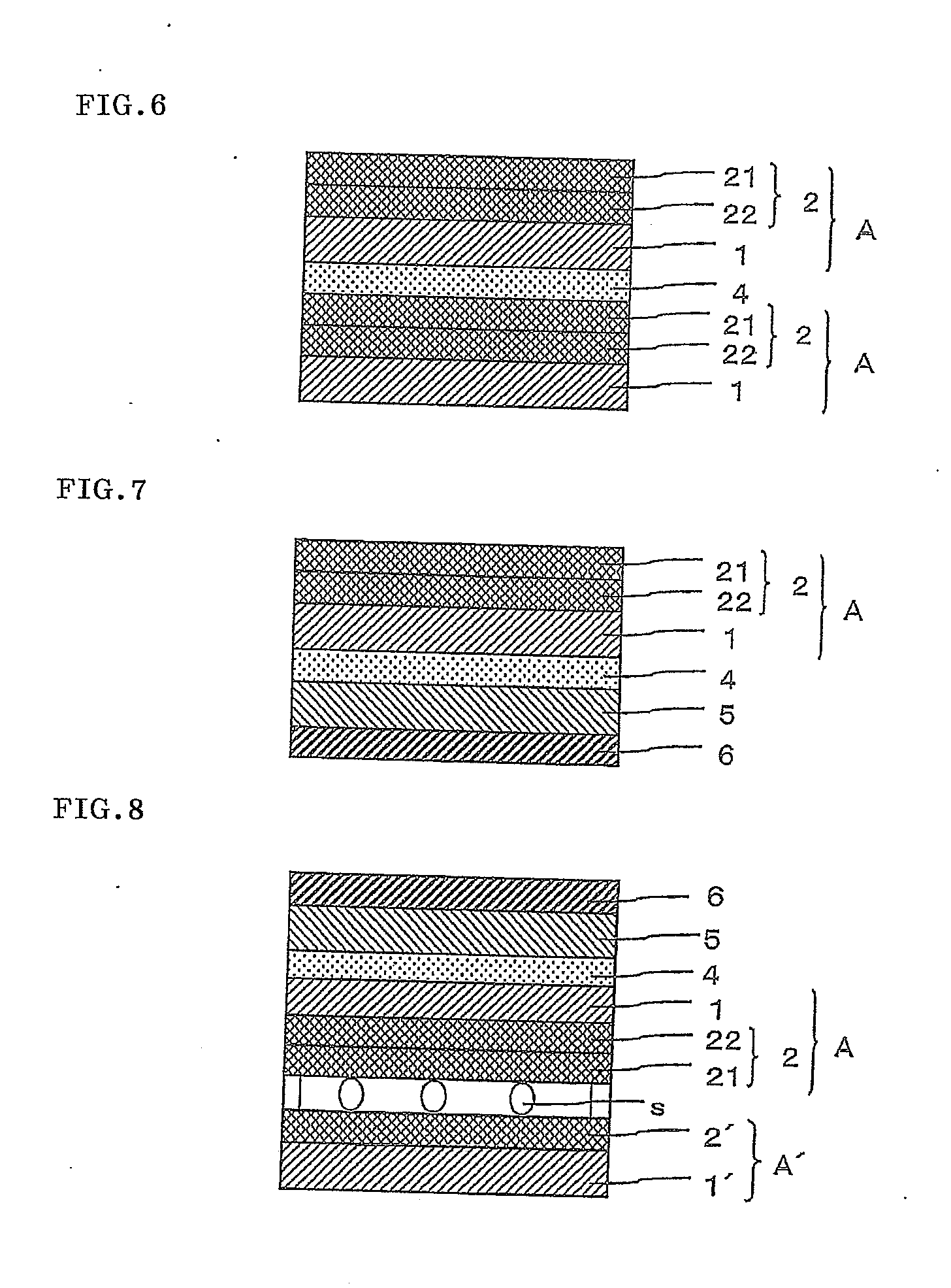Method for producing transparent conductive film
a technology of transparent conductive film and conductive film, which is applied in the direction of vacuum evaporation coating, instruments, coatings, etc., to achieve the effects of reducing specific resistance, reducing crystallization time, and reducing crystallization tim
- Summary
- Abstract
- Description
- Claims
- Application Information
AI Technical Summary
Benefits of technology
Problems solved by technology
Method used
Image
Examples
example 1
[0088]A 30 nm thick undercoat layer of a thermosetting resin composed of a melamine resin, an alkyd resin, and an organosilane condensate (2:2:1 in weight ratio) was formed on one surface of a film substrate made of a 23 μm thick polyethylene terephthalate film (hereinafter referred to as PET film). The surface of the undercoat layer had an arithmetic average roughness Ra of 0.5 nm.
[0089]A 20 nm thick deposited layer of an indium-tin complex oxide was formed on the undercoat layer by a reactive sputtering method using a sintered material of 90% indium oxide and 10% tin monoxide in a 0.4 Pa atmosphere composed of 80% by volume of argon gas and 20% by volume of oxygen gas. The deposition process included evacuating the sputtering system until the water partial pressure at the time of deposition reached 8.0×10−5 Pa, then introducing argon gas and oxygen gas, and performing the deposition at a substrate temperature of 140° C. in an atmosphere with a water partial pressure of 8.0×10−5 Pa...
examples 2 to 7 and 9 to 13
[0092]Transparent conductive films were prepared as in Example 1, except that the content of tin oxide in the sintered indium oxide-tin oxide material and the thickness of each layer, which were used in forming the deposited layer (22) in the step (A1) and in forming the deposited layer (21) in the step (A2), were changed as shown in Table 1. Each transparent conductive layer was also crystallized as in Example 1. In Table 1, “tin oxide content” indicates the content of tin oxide in the indium oxide or indium-tin complex oxide material used as the sputtering target. A tin oxide content of “0%” indicates the case using indium oxide. The thickness of the deposited layer indicates the thickness before the crystallization. The content of tin oxide and the thickness of the deposited layer are considered to be unchanged even after the crystallization.
example 8
[0093]An undercoat layer was formed on one surface of a film substrate as in Example 1. A 3 nm thick deposited layer of an indium-tin complex oxide was formed on the undercoat layer by a reactive sputtering method using a sintered material of 97% indium oxide and 3% tin monoxide in a 0.4 Pa atmosphere composed of 80% by volume of argon gas and 20% by volume of oxygen gas. The deposition process included evacuating the sputtering system until the water partial pressure at the time of deposition reached 8.0×10−5 Pa, then introducing argon gas and oxygen gas, and performing the deposition at a substrate temperature of 140° C. in an atmosphere with a water partial pressure of 8.0×10−5 Pa. At this time, the water partial pressure was 0.05% of the partial pressure of the argon gas. The resulting deposited layer corresponds to the deposited layer (23) of FIG. 2A formed in another step.
[0094]A 19 nm thick deposited layer of an indium-tin complex oxide was further formed on the resulting dep...
PUM
| Property | Measurement | Unit |
|---|---|---|
| thickness | aaaaa | aaaaa |
| thickness | aaaaa | aaaaa |
| thickness | aaaaa | aaaaa |
Abstract
Description
Claims
Application Information
 Login to View More
Login to View More - R&D
- Intellectual Property
- Life Sciences
- Materials
- Tech Scout
- Unparalleled Data Quality
- Higher Quality Content
- 60% Fewer Hallucinations
Browse by: Latest US Patents, China's latest patents, Technical Efficacy Thesaurus, Application Domain, Technology Topic, Popular Technical Reports.
© 2025 PatSnap. All rights reserved.Legal|Privacy policy|Modern Slavery Act Transparency Statement|Sitemap|About US| Contact US: help@patsnap.com



